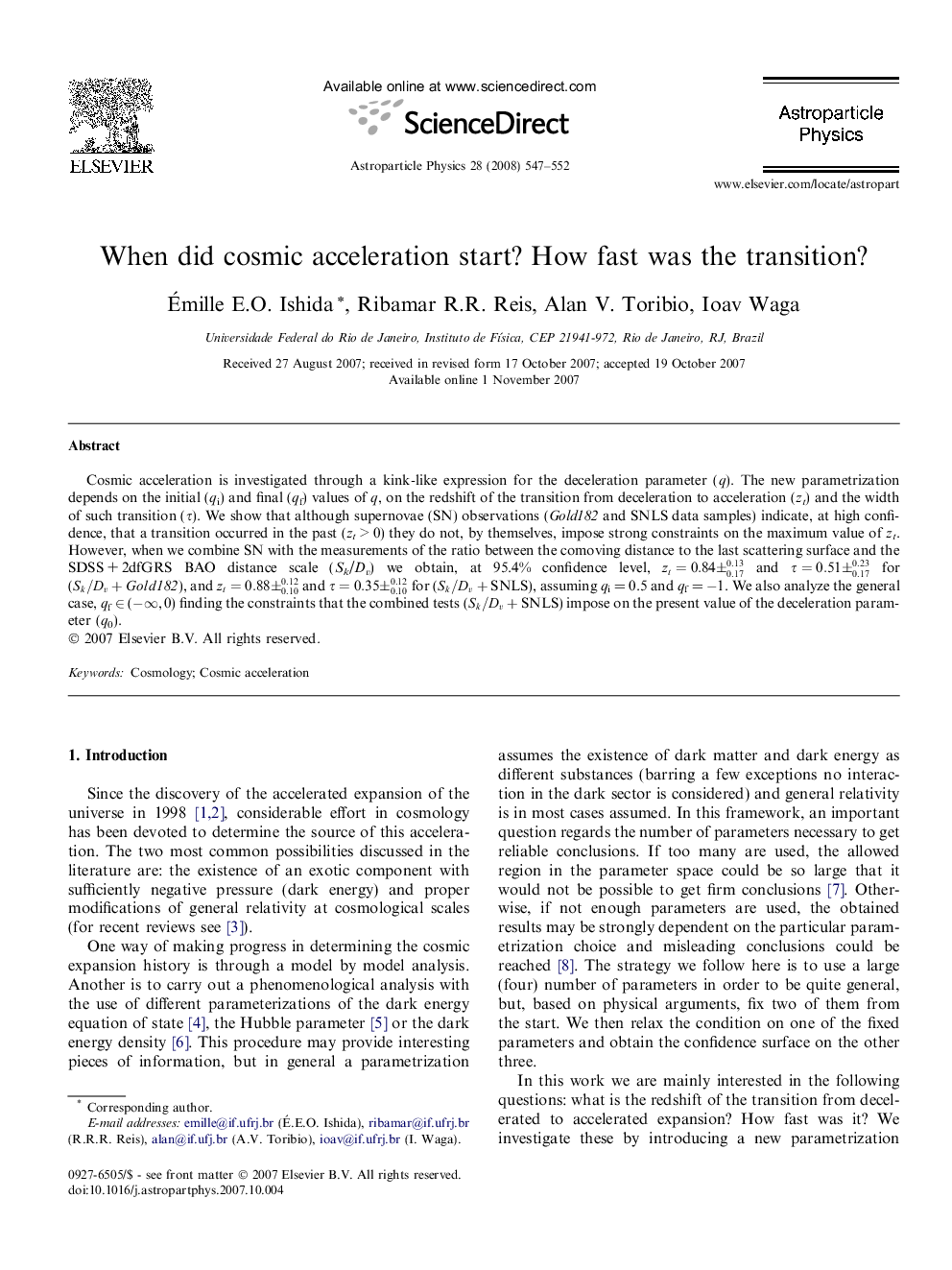| کد مقاله | کد نشریه | سال انتشار | مقاله انگلیسی | نسخه تمام متن |
|---|---|---|---|---|
| 1771448 | 1020765 | 2008 | 6 صفحه PDF | دانلود رایگان |

Cosmic acceleration is investigated through a kink-like expression for the deceleration parameter (q). The new parametrization depends on the initial (qi) and final (qf) values of q, on the redshift of the transition from deceleration to acceleration (zt) and the width of such transition (τ). We show that although supernovae (SN) observations (Gold182 and SNLS data samples) indicate, at high confidence, that a transition occurred in the past (zt > 0) they do not, by themselves, impose strong constraints on the maximum value of zt. However, when we combine SN with the measurements of the ratio between the comoving distance to the last scattering surface and the SDSS + 2dfGRS BAO distance scale (Sk/Dv) we obtain, at 95.4% confidence level, zt=0.84±0.170.13 and τ=0.51±0.170.23 for (Sk/Dv+GoldSk/Dv+Gold182 ), and zt=0.88±0.100.12 and τ=0.35±0.100.12 for (Sk/Dv+SNLSSk/Dv+SNLS), assuming qi = 0.5 and qf = −1. We also analyze the general case, qf ∈ (−∞, 0) finding the constraints that the combined tests (Sk/Dv+SNLSSk/Dv+SNLS) impose on the present value of the deceleration parameter (q0).
Journal: Astroparticle Physics - Volume 28, Issue 6, January 2008, Pages 547–552